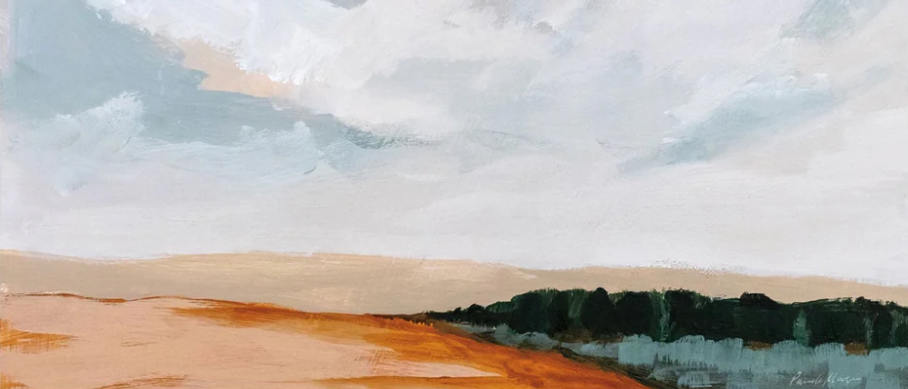
Watercolour Art: How Pigments Added Life to Masterpieces
Watercolour art may be tale as old as time given its rich and vivid history. Let’s take a quick look at how this painting medium started off as (quite literally) as wall paint to one of the most
What is watercolour?
Watercolour is a painting medium that uses pigments mixed with water to create a transparent or translucent effect on paper. It is typically applied to paper with a brush, and the pigments are diluted with water to achieve varying degrees of intensity and transparency. Watercolour paintings are known for their luminous and delicate appearance, characterised by their flowing washes of colour and subtle blending.
Watercolour pigments are usually made from finely ground colourants, such as natural or synthetic pigments, suspended in a water-soluble binder, such as gum arabic or other polymers. When water is added to the pigments, they dissolve and spread on the paper, allowing the artist to create a wide range of effects, from delicate washes of colour to bold, saturated areas.
Watercolor is a versatile medium that can be used to create a wide range of subjects, including landscapes, portraits, still lifes, and abstract compositions. It can be used in various techniques, including wet-on-wet, wet-on-dry, and dry brush, each producing different effects and textures. Watercolor is often associated with spontaneity and unpredictability due to the way the pigments react with water and the absorbent nature of paper, making it a medium that requires skill and control.
One of the unique characteristics of watercolour is its transparency, allowing for layering of colors to create depth and luminosity. Watercolour paintings are typically done on high-quality watercolour paper that is specifically designed to absorb and hold water, allowing the pigments to spread and blend in controlled ways.
Watercolour has a long history as an artistic medium, with roots dating back to ancient times, but it has continued to evolve and adapt to the techniques and styles of different artists and art movements over the centuries. Today, watercolour remains a popular medium among artists of all levels, from beginners to professionals, and continues to be appreciated for its unique characteristics and expressive possibilities.
History of Watercolours
The use of watercolour as a painting medium can be traced back to ancient times, with evidence of watercolor-like techniques found in cave paintings and manuscripts from civilizations such as Ancient Egypt, Ancient China, and Ancient India. These early watercolour-like paintings were created using pigments mixed with water and applied to various surfaces, such as cave walls, papyrus scrolls, and silk.
However, the modern form of watercolour as we know it today emerged during the Renaissance in Europe, particularly in the 15th century. During this time, artists such as Albrecht Dürer and Leonardo da Vinci used watercolour as a means of creating preparatory studies for their larger oil paintings. These early watercolour studies were often used for capturing ideas, compositions, and colour studies before transferring them to larger and more permanent works in oil.
Watercolour gained further popularity in the 18th century, particularly in England, where artists such as Thomas Girtin and J.M.W. Turner used it to capture the atmospheric effects of light and colour in their landscapes. Watercolour societies and organisations were formed, and exhibitions of watercolour paintings gained prominence, further establishing watercolour as a respected medium for artists.
Since then, watercolour has continued to evolve and adapt to various artistic styles and techniques, with artists experimenting with different approaches, styles, and subjects.
Famous Watercolour Paintings
There are numerous famous watercolour paintings that have been created by renowned artists throughout history. Some of the most notable examples include:
"Blue Boat" by Winslow Homer - This watercolour painting by the American artist Winslow Homer is known for its dynamic depiction of crashing waves against a fishing boat, showcasing Homer's mastery of capturing the power of the sea.
"No Woman, No Cry" by Chris Ofili - This contemporary watercolour painting by British artist Chris Ofili gained international recognition for its intricate and colourful depiction of a black woman in a serene and dreamlike setting, exploring themes of race, gender, and identity.
"White Water Lilies and Japanese Bridge" by Claude Monet - This iconic watercolour painting by the French Impressionist artist Claude Monet is part of his famous series of water lily paintings, known for their loose brushwork, vibrant colors, and poetic representation of nature.
"The Selvedge of the Wood" by John Singer Sargent - This atmospheric watercolor painting by American artist John Singer Sargent features a dense forest scene with dappled light filtering through the trees, showcasing his skillful handling of watercolor to create texture and depth.
"The Artist's Studio" by Peter Paul Rubens - This historic watercolour painting by the Flemish Baroque artist Peter Paul Rubens is known for its detailed depiction of his studio and the surrounding landscape, showcasing his skill in capturing both interior and exterior spaces with watercolour.
"Fisherman at Sea" by J.M.W. Turner - This dramatic watercolour painting by the English Romantic artist J.M.W. Turner is known for its dynamic portrayal of a fishing boat battling against crashing waves in a stormy sea, showcasing Turner's mastery of capturing the power and mood of the sea.
"The Adirondacks" by Georgia O'Keeffe - This abstract watercolour painting by American artist Georgia O'Keeffe is known for its bold colours, flowing lines, and organic forms, showcasing her unique style and approach to watercolour as a means of abstraction.
These are just a few examples of famous watercolour paintings from different eras and styles, highlighting the versatility and expressive potential of this medium. Watercolor has been used by numerous artists throughout history to create a wide range of subjects, styles, and techniques, and continues to be appreciated for its unique characteristics and expressive possibilities.
Bring Watercolour Wall Art into your home with our help
Here at Gioia, we pride ourselves in offering a vast and diverse range of wall art so that you can find the perfect piece for your home. Watercolour paintings and prints feature heavily in our range, with abstract and still life prints and even options for the kids. Here are some of our favourite pieces:

Evening Glow Set of 3 Abstract Prints

Bold Blooming Set of 2 Watercolour Prints
Watercolour Dinosaurs Print
Gold and Navy Set of 2 Abstract Watercolour Prints
Lemon Market Watercolour Print Set
Coffee Paris Watercolour Print
Four Cranes Watercolour Print
Watercolour Prints by Gioia
Bring your living space to life with high quality prints from Gioia. We have a wide selection of watercolour pieces to choose from, ranging from nature to abstract pieces.
With hundreds of designs to choose from our collection of watercolour prints will suit any room in your home.
Our prints are also available Australia-wide, so you can enjoy the best wall art in Australia no matter where you are.







